
Discover the Heartbeat of Daejeon: Jung-gu
Explore Jung-gu in Daejeon: A captivating blend of tradition and modernity, offering vibrant markets, serene parks, and a rich cultural experience in South Korea.
Nestled in the vibrant city of Daejeon, Jung-gu is a remarkable blend of traditional charm and modern dynamism. As the central district, it offers a rich tapestry of experiences, from bustling markets to serene parks. This neighborhood is a must-visit for those looking to immerse themselves in Korean culture and daily life. Begin your journey at Daejeon Sky Road, a pedestrian-friendly street adorned with a mesmerizing LED canopy. This area is perfect for evening strolls, where you can savor street food and explore local shops. Don't miss the chance to visit Jungang Market, one of the largest traditional markets in Daejeon. Here, you can sample local delicacies, buy fresh produce, and interact with friendly vendors. For a touch of history, head to Hanbat Arboretum, a haven of tranquility amidst the city's hustle and bustle. This expansive arboretum showcases a diverse range of flora and is an ideal spot for picnics or leisurely walks. Additionally, the nearby Daejeon O-World combines a zoo, amusement park, and flower land, making it a great destination for families. Jung-gu's culinary scene is diverse and delightful. From traditional Korean BBQ to modern fusion cuisine, there's something to satisfy every palate. Be sure to try the local specialty, Chueotang (loach soup), at one of the many cozy eateries. The neighborhood is also home to several cultural landmarks, including the Daejeon Art Museum and the Daejeon Literature Center. These institutions offer a glimpse into the artistic and literary heritage of the region. In Jung-gu, the past and present coexist harmoniously, offering a unique experience that is both enriching and exciting. Whether you're a history buff, a foodie, or an adventure seeker, Jung-gu has something to offer everyone.
Local tips in Jung-gu
- Visit Daejeon Sky Road in the evening for the best LED light displays.
- Try Chueotang (loach soup) at local restaurants for an authentic culinary experience.
- Bring cash when visiting Jungang Market as many vendors do not accept credit cards.
- Spend a relaxing afternoon at Hanbat Arboretum; it's perfect for picnics.
- Check the schedule of the Daejeon Art Museum for special exhibitions.
Discover the Heartbeat of Daejeon: Jung-gu
Nestled in the vibrant city of Daejeon, Jung-gu is a remarkable blend of traditional charm and modern dynamism. As the central district, it offers a rich tapestry of experiences, from bustling markets to serene parks. This neighborhood is a must-visit for those looking to immerse themselves in Korean culture and daily life. Begin your journey at Daejeon Sky Road, a pedestrian-friendly street adorned with a mesmerizing LED canopy. This area is perfect for evening strolls, where you can savor street food and explore local shops. Don't miss the chance to visit Jungang Market, one of the largest traditional markets in Daejeon. Here, you can sample local delicacies, buy fresh produce, and interact with friendly vendors. For a touch of history, head to Hanbat Arboretum, a haven of tranquility amidst the city's hustle and bustle. This expansive arboretum showcases a diverse range of flora and is an ideal spot for picnics or leisurely walks. Additionally, the nearby Daejeon O-World combines a zoo, amusement park, and flower land, making it a great destination for families. Jung-gu's culinary scene is diverse and delightful. From traditional Korean BBQ to modern fusion cuisine, there's something to satisfy every palate. Be sure to try the local specialty, Chueotang (loach soup), at one of the many cozy eateries. The neighborhood is also home to several cultural landmarks, including the Daejeon Art Museum and the Daejeon Literature Center. These institutions offer a glimpse into the artistic and literary heritage of the region. In Jung-gu, the past and present coexist harmoniously, offering a unique experience that is both enriching and exciting. Whether you're a history buff, a foodie, or an adventure seeker, Jung-gu has something to offer everyone.
Iconic landmarks you can’t miss
Daejeon O-World
Experience the thrill of Daejeon O-World, a premier theme park offering exhilarating rides and enchanting attractions for all ages in South Korea.
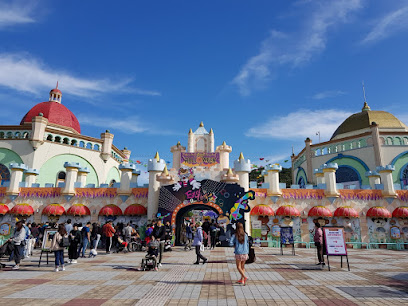
Daejeon Jungang Market
Discover the vibrant Daejeon Jungang Market, a lively hub of culture, food, and shopping in the heart of Daejeon, South Korea.
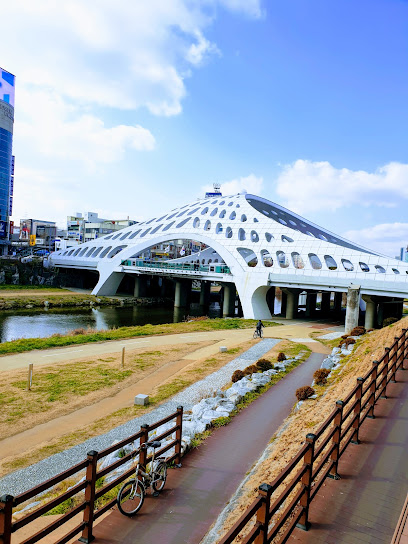
Ppuri Park
Explore the serene beauty of Ppuri Park in Daejeon, South Korea, a perfect retreat for nature lovers and families seeking tranquility.
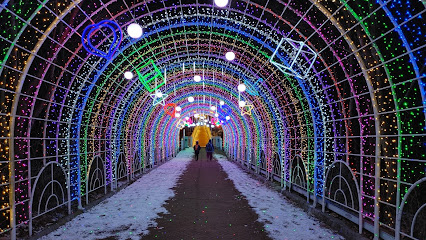
Daejeon Skyroad
Explore the stunning Daejeon Skyroad, an architectural marvel offering scenic views, vibrant city life, and cultural experiences in South Korea.
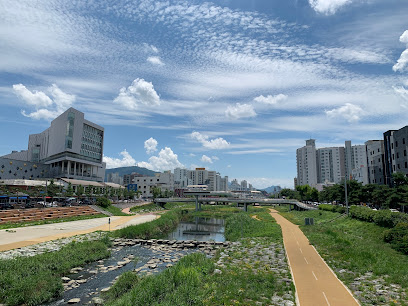
Daejeon Aquarium
Explore the mesmerizing underwater world at Daejeon Aquarium, a family-friendly attraction teeming with vibrant marine life and educational experiences.
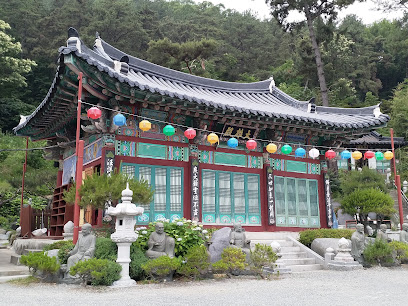
Sajeong Park
Experience the tranquility and beauty of Sajeong Park in Daejeon, a perfect urban escape with lush landscapes and cultural events.
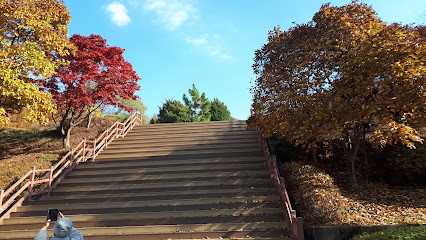
Dunsan Prehistoric Site
Explore the Dunsan Prehistoric Site, a historical landmark in Daejeon, South Korea, where nature and history intertwine to tell ancient tales.
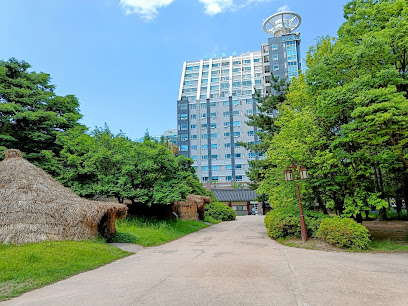
Bomunsan fortress
Discover the historical significance and stunning views at Bomunsan Fortress, a must-visit landmark in Daejeon, South Korea.
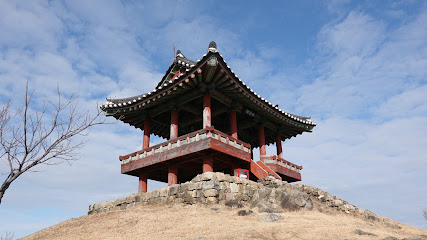
Daejeon walking street
Discover the vibrant culture of Daejeon at Daejeon Walking Street, where shopping, dining, and entertainment await in a lively pedestrian-friendly environment.
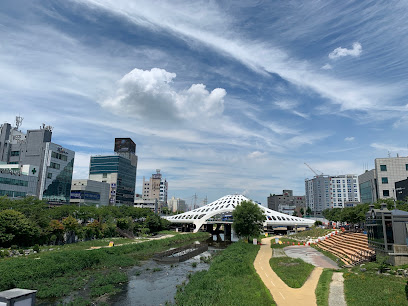
Bongsolu
Discover the historical charm of Bongsolu in Daejeon, a captivating site showcasing Korea's rich cultural heritage amidst serene surroundings.
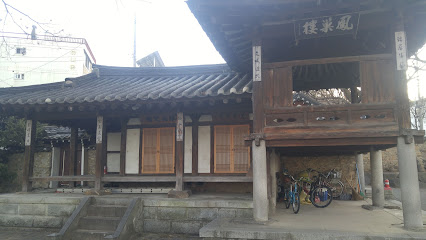
Unmissable attractions to see
Daejeon O-World
Experience the excitement of Daejeon O-World, a top theme park in South Korea with thrilling rides, beautiful gardens, and family-friendly fun.
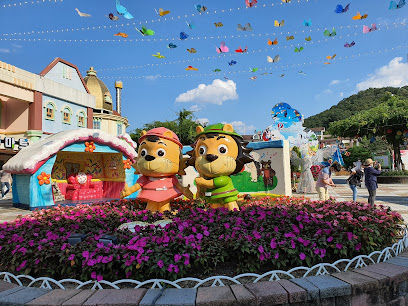
Daejeon Jungang Market
Discover the bustling Daejeon Jungang Market, a vibrant hub of local culture, delicious street food, and unique shopping experiences in South Korea.

Hanbat Arboretum
Discover the breathtaking beauty of Hanbat Arboretum, Daejeon's lush botanical garden filled with diverse plants, serene landscapes, and family-friendly spaces.
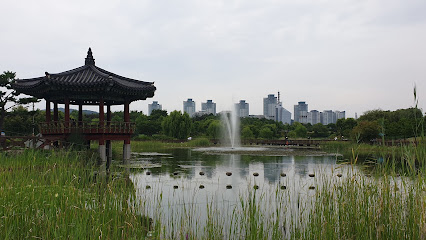
Ppuri Park
Explore the tranquil beauty of Ppuri Park in Daejeon, a captivating blend of nature and culture perfect for relaxation and exploration.
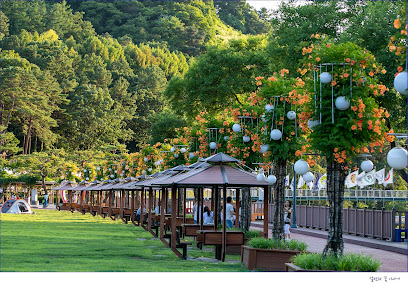
Daejeon Skyroad
Explore the vibrant Daejeon Skyroad, a hub of shopping, dining, and entertainment in South Korea's dynamic urban landscape.
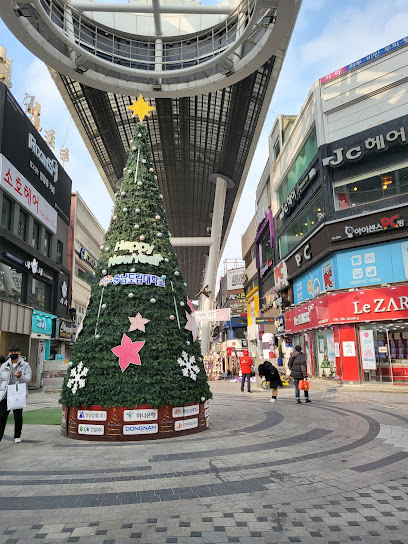
Daejeon Aquarium
Discover the enchanting marine life at Daejeon Aquarium, a must-visit tourist attraction in South Korea with immersive exhibits and educational experiences.
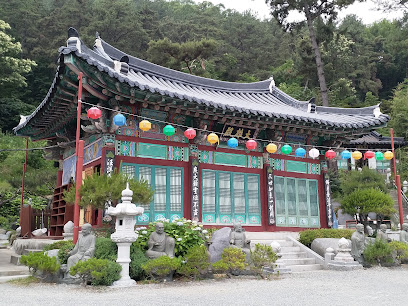
Uam Historical Park
Discover the serene beauty and rich history of Uam Historical Park in Daejeon, a perfect blend of nature and culture for all visitors.
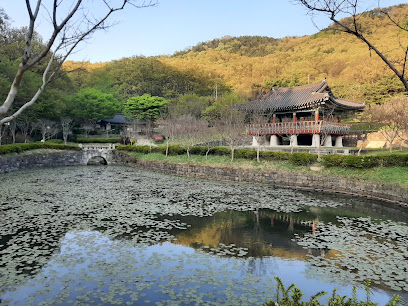
Dunsan Prehistoric Site
Explore the ancient wonders of the Dunsan Prehistoric Site in Daejeon, South Korea, where history and nature intertwine beautifully.
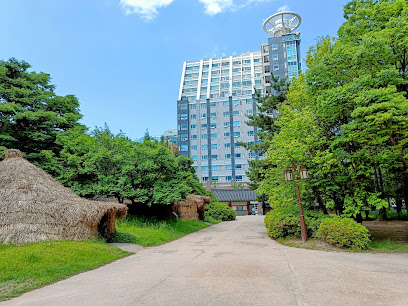
Daejeon walking street
Explore Daejeon Walking Street: a vibrant pedestrian area filled with delicious street food, lively entertainment, and the essence of Korean culture.
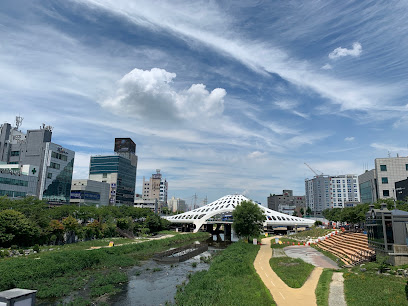
치유의숲
Discover the serene beauty and cultural richness of Museong Park in Daejeon, a perfect blend of nature and heritage in South Korea.
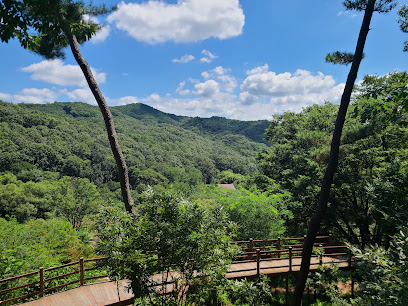
Essential places to dine
THE KINGDOM BUFFET & WEDDING
Experience the culinary delights at The Kingdom Buffet & Wedding in Daejeon, offering an extensive buffet with international flavors in an elegant setting.
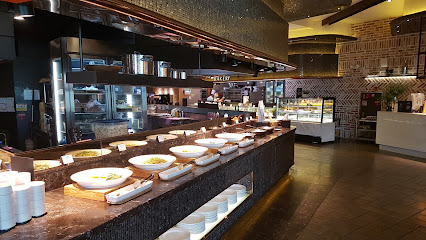
Wangwan Sikdang
Experience authentic Korean cuisine at Wangwan Sikdang in Daejeon—where tradition meets flavor in every dish.
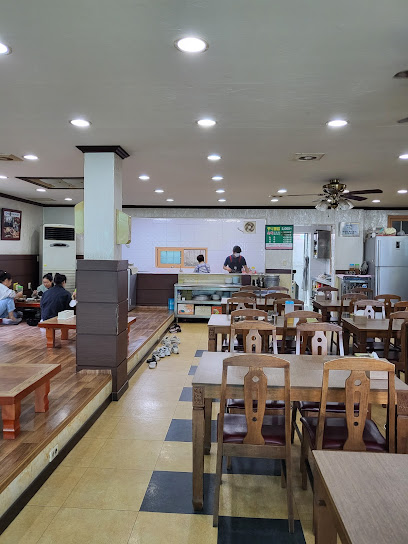
Flying Pan
Experience the essence of Italy at Flying Pan in Daejeon – where authentic flavors meet warm hospitality.
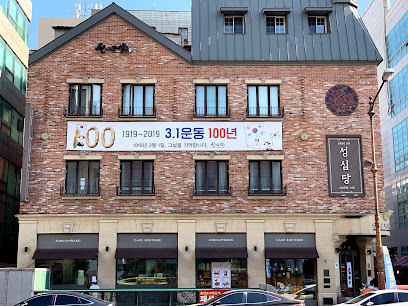
Solpine International Restaurant
Discover global flavors in Daejeon's culinary gem - Solpine International Restaurant offers diverse dishes that delight every palate.
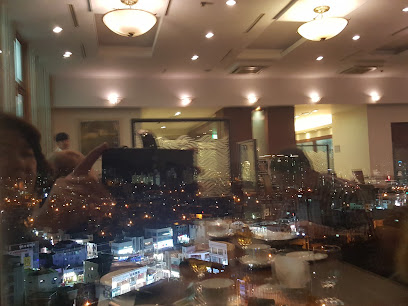
느티나무집
Discover the heart of Korean cuisine at 느티나무집 in Daejeon – where tradition meets taste in every dish.
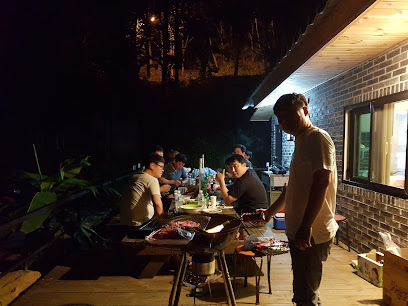
Galam
Experience authentic Korean cuisine at Galam in Daejeon - where tradition meets flavor in a cozy dining atmosphere.

비엔담소
Discover the flavors of Western cuisine at 비엔담소 in Jung-gu, Daejeon – a must-visit culinary destination for tourists.
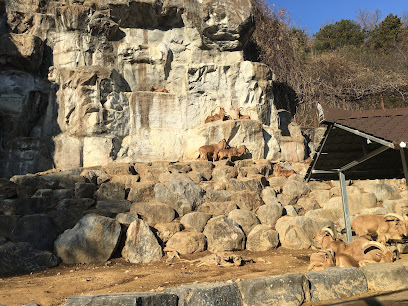
비엔나로
Experience the dynamic flavors of 비엔나로 in Daejeon – where fast food meets local taste sensations.

Doldam
Experience authentic Korean cuisine at Doldam in Daejeon – where tradition meets flavor in every dish.

뿌리깊은석갈비막국수
Experience authentic Korean cuisine at 뿌리깊은석갈비막국수 in Daejeon, specializing in stone-grilled ribs and refreshing cold buckwheat noodles.

Markets, malls and hidden boutiques
Daejeon O-World
Discover the enchanting Daejeon O-World, a perfect blend of thrilling rides, wildlife encounters, and beautiful gardens in South Korea.
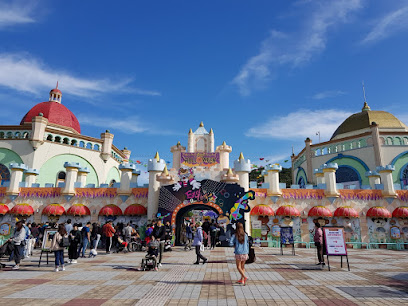
Daejeon Jungang Market
Experience the vibrant culture, delicious cuisine, and unique shopping at Daejeon Jungang Market, a must-visit destination in Daejeon, South Korea.
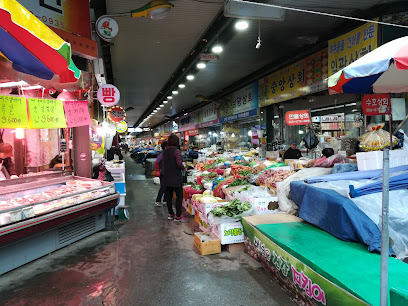
Lotte Department Store
Experience the ultimate shopping adventure at Lotte Department Store in Daejeon, where luxury meets local charm for an unforgettable day out.
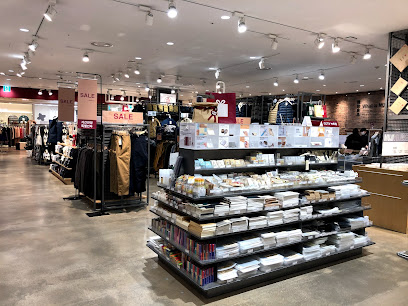
Hyundai Premium Outlet Daejeon
Explore Hyundai Premium Outlet Daejeon: A shopping haven with designer brands, delightful dining, and family-friendly entertainment.
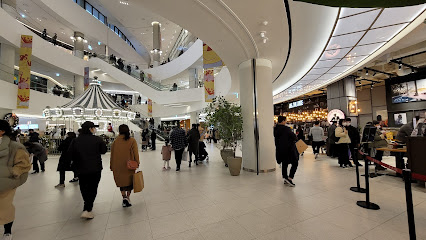
Galleria Department Store Timeworld
Explore luxury shopping, exquisite dining, and vibrant entertainment at Galleria Department Store Timeworld in Daejeon, South Korea.
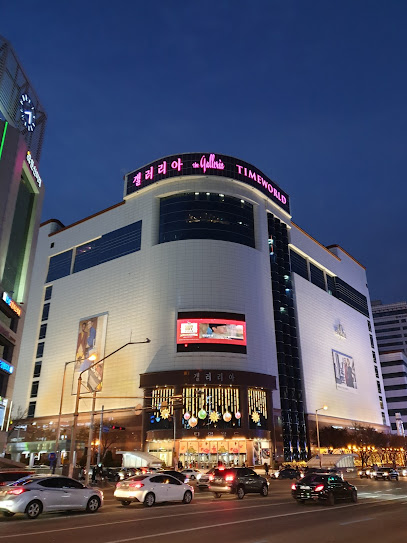
Daejeon Shinsegae Art & Science
Explore Daejeon Shinsegae Art & Science: where shopping meets art and innovation in a stunning architectural setting.
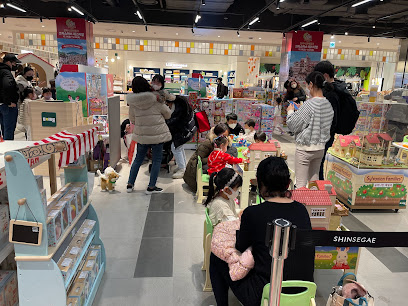
SAY Department Store
Discover shopping, dining, and entertainment at Daejeon's SAY Department Store, a vibrant hub for tourists and locals alike.
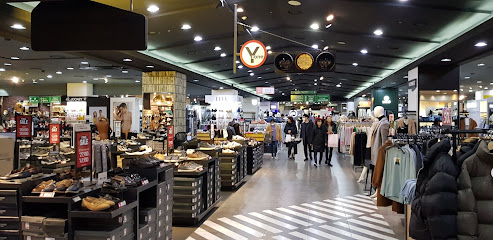
Daejeon Skyroad
Explore the vibrant Daejeon Skyroad, a unique pedestrian walkway filled with shops, eateries, and stunning urban views in South Korea.
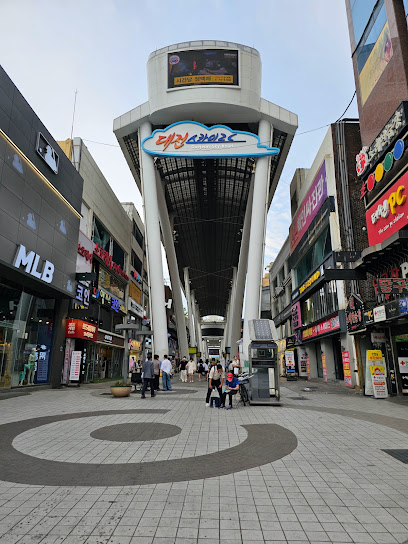
NC Jungangno Station Branch
Explore diverse shopping and dining experiences at NC Jungangno Station Branch, a vibrant department store in the heart of Daejeon, South Korea.
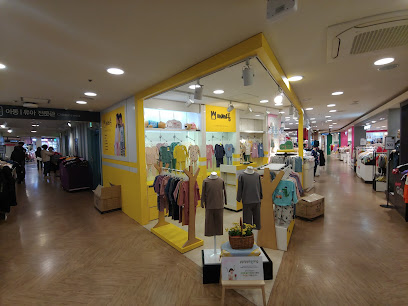
Cafe BlessRoll
Discover Café BlessRoll in Daejeon: A cozy haven for dessert lovers and coffee enthusiasts, perfect for a sweet escape during your travels.
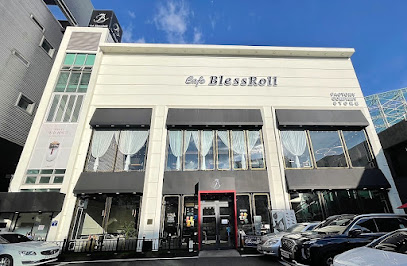
Essential bars & hidden hideouts
ThursdayParty_DaeJeon
Discover the pulse of Daejeon's nightlife at Thursday Party, where vibrant ambiance meets creative cocktails for an unforgettable experience.
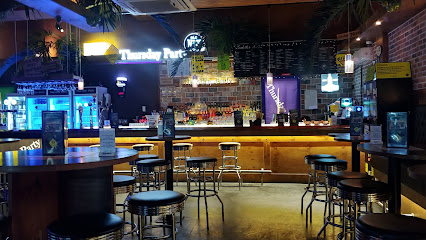
아도니스
Discover Daejeon's Adonis Cocktail Bar: A hub of creativity, flavor, and vibrant nightlife in the heart of Jung-gu.
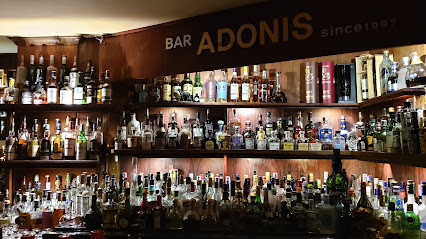
The Ranch Pub
Experience the vibrant atmosphere and delicious offerings at The Ranch Pub, the go-to spot for beer lovers in Yuseong-gu, Daejeon.
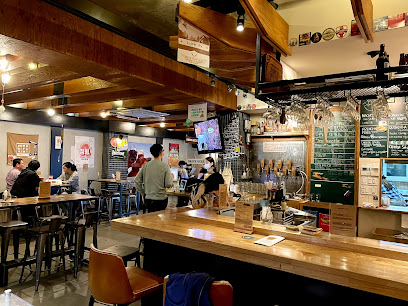
White flowers in the desert
Experience the enchanting ambiance and exquisite selection of wines and cocktails at White Flowers in the Desert in Daejeon.
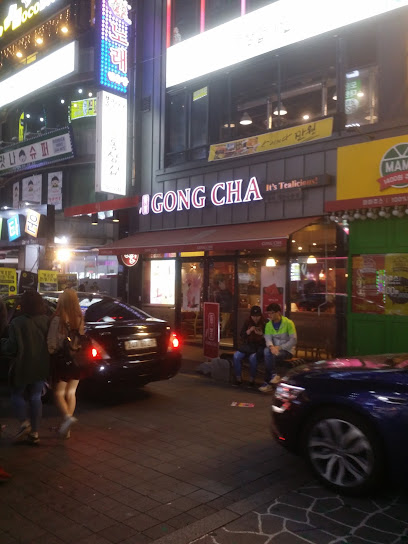
DO TAPS
Experience Daejeon's nightlife at DO TAPS, a lively bar known for its creative cocktails and inviting atmosphere, perfect for social gatherings.
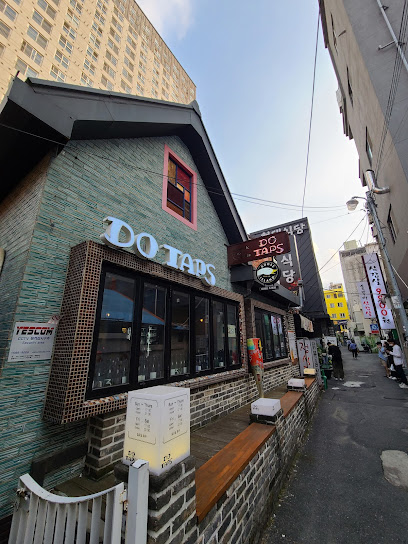
FML
Experience the lively atmosphere and diverse drink selection at FML, a top bar destination in Daejeon, perfect for nightlife enthusiasts.
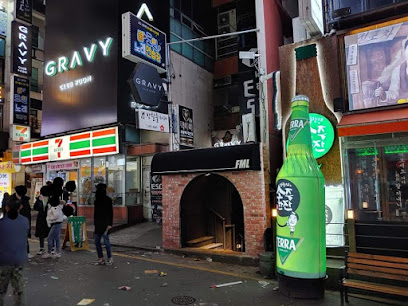
석이네601
Discover the pulse of Daejeon's nightlife at 석이네601, a lively pub offering a diverse drink selection and a vibrant atmosphere.
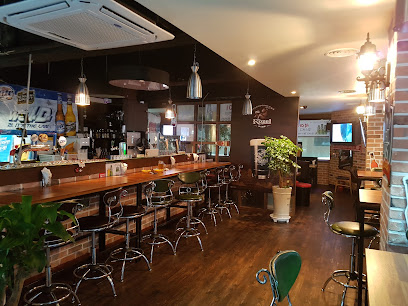
백도어 Backdoor
Experience the heart of Daejeon's nightlife at 백도어 Backdoor, where live music and vibrant energy create unforgettable evenings.
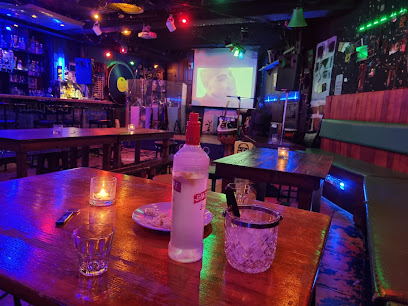
캘리포니아
Discover the energetic ambiance and unique cocktails at 캘리포니아, a must-visit bar in Daejeon, South Korea, perfect for unwinding and socializing.
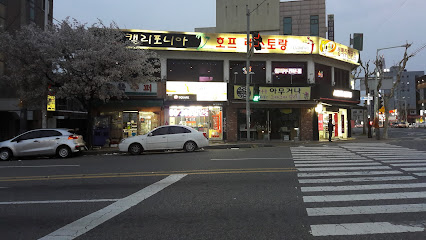
Pabseu
Discover the vibrant nightlife at Pabseu, a top bar in Daejeon offering creative drinks and a lively atmosphere for tourists and locals alike.

Local Phrases
-
- Hello안녕하세요
[annyeonghaseyo] - Goodbye안녕히 가세요
[annyeonghi gaseyo] - Yes네
[ne] - No아니요
[aniyo] - Please/You're welcome부탁합니다/천만에요
[butakhamnida/cheonmaneyo] - Thank you감사합니다
[gamsahamnida] - Excuse me/Sorry죄송합니다
[joesonghamnida] - How are you?어떻게 지내세요?
[eotteoke jinaeseyo?] - Fine. And you?잘 지내고 있어요. 당신은요?
[jal jinaego isseoyo. dangsineunyo?] - Do you speak English?영어 할 수 있나요?
[yeongeo hal su innayo?] - I don't understand이해하지 못해요
[ihaehaji mothaeyo]
- Hello안녕하세요
-
- I'd like to see the menu, please메뉴를 보고 싶어요
[menyureul bogo sipeoyo] - I don't eat meat고기를 먹지 않아요
[gogireul meokji anayo] - Cheers!건배!
[geonbae!] - I would like to pay, please계산하고 싶어요
[gyesanhago sipeoyo]
- I'd like to see the menu, please메뉴를 보고 싶어요
-
- Help!도와주세요!
[dowajuseyo!] - Go away!멀리 가세요!
[meolli gaseyo!] - Call the Police!경찰을 불러주세요!
[gyeongchareul bulleojuseyo!] - Call a doctor!의사를 부르세요!
[uisareul bureuseyo!] - I'm lost길을 잃었어요
[gireul ilheosseoyo] - I'm ill아파요
[apayo]
- Help!도와주세요!
-
- I'd like to buy...사고 싶어요...
[sago sipeoyo...] - I'm just looking둘러보고 있어요
[dulleobogo isseoyo] - How much is it?얼마에요?
[eolmaeyo?] - That's too expensive너무 비싸요
[neomu bissayo] - Can you lower the price?가격을 깎아주실 수 있나요?
[gageoreul kkakajusil su innayo?]
- I'd like to buy...사고 싶어요...
-
- What time is it?지금 몇 시에요?
[jigeum myeot shieyo?] - It's one o'clock한 시에요
[han shieyo] - Half past (10)십 시 반
[shib shi ban] - Morning아침
[achim] - Afternoon오후
[ohu] - Evening저녁
[jeonyeok] - Yesterday어제
[eoje] - Today오늘
[oneul] - Tomorrow내일
[naeil] - 1하나
[hana] - 2둘
[dul] - 3셋
[set] - 4넷
[net] - 5다섯
[daseot] - 6여섯
[yeoseot] - 7일곱
[ilgop] - 8여덟
[yeodeol] - 9아홉
[ahop] - 10열
[yeol]
- What time is it?지금 몇 시에요?
-
- Where's a/the...?... 있는 곳은 어디에요?
[... innun goseun eodieyo?] - What's the address?주소가 뭐에요?
[jusoga mwoeyo?] - Can you show me (on the map)?지도로 보여줄 수 있나요?
[jidoro boyeojul su innayo?] - When's the next (bus)?다음 버스는 언제에요?
[daeum beoseuneun eonjeyo?] - A ticket (to ....)표 (....로 가는)
[pyo (....ro ganeun)]
- Where's a/the...?... 있는 곳은 어디에요?
History of Jung-gu
-
Jung-gu, the central district of Daejeon, has historical roots that date back to the late Joseon Dynasty (1392-1897). The area developed significantly due to its strategic location along the transportation routes that connected different regions of Korea. As a hub for trade and governance, Jung-gu was pivotal in the administrative framework of Daejeon.
-
During the Japanese colonial period (1910-1945), Jung-gu underwent rapid modernization. Infrastructure projects, including the construction of railways and roads, transformed the area into an important commercial center. The Japanese also established various colonial buildings that still reflect the architectural styles of that era, blending Korean and Japanese influences.
-
Following Korea's liberation in 1945, Jung-gu faced significant challenges, including the Korean War (1950-1953), which devastated much of Daejeon. However, the post-war period also marked the beginning of reconstruction and growth, as Jung-gu became a focal point for governmental and economic activities in the region. The establishment of various institutions and companies attracted a surge of population and investment.
-
The 1980s and 1990s were characterized by rapid urbanization in Jung-gu, coinciding with South Korea's economic boom. High-rise buildings, shopping complexes, and modern amenities transformed the neighborhood, making it a vibrant urban center. The area became known for its cultural diversity, with a mix of traditional markets and contemporary commercial spaces.
-
In recent years, Jung-gu has evolved into a cultural and technological hub, hosting numerous festivals, art exhibitions, and technological fairs. The establishment of the Daejeon Science Complex and the nearby KAIST (Korea Advanced Institute of Science and Technology) has further solidified Jung-gu's reputation as a center for innovation and education, drawing in students and professionals from around the globe.
Jung-gu Essentials
-
Jung-gu is easily accessible from other neighborhoods in Daejeon. The Daejeon Metro Line 1 has several stations within Jung-gu, including Daejeon Station, which is a key transport hub. City buses also connect Jung-gu with other neighborhoods, making it convenient to travel to areas like Yuseong-gu and Dong-gu. For those coming from outside Daejeon, KTX and regular train services operate from Daejeon Station, and the city is well-connected by express buses from major cities across South Korea.
-
Within Jung-gu, public transportation options include the Daejeon Metro and city buses. The metro is efficient for traveling across the neighborhood and to nearby areas. Bicycles can also be rented through Daejeon’s bike-sharing program, which is a great way to explore local parks and attractions. Taxis are readily available and relatively inexpensive if you prefer not to navigate public transport.
-
Jung-gu is generally safe for tourists, but it is advisable to take standard precautions. Areas around marketplaces and busy tourist spots may attract petty crime, such as pickpocketing. It is wise to avoid poorly lit streets late at night, especially around the outskirts of Jung-gu. Always keep your belongings secure and remain vigilant in crowded areas.
-
In case of emergencies, dial 112 for police assistance or 119 for fire and medical emergencies. The Daejeon Medical Center and other hospitals are available for urgent care. It is advisable to have travel insurance that covers medical situations. For minor health issues, local pharmacies can provide over-the-counter medications.
-
Fashion: Do dress modestly, especially when visiting religious sites. Don't wear overly casual or revealing clothing. Religion: Do respect local customs and traditions, particularly in temples and churches. Public Transport: Do offer your seat to elderly passengers. Don't eat or drink on public transport. Greetings: Do greet with a slight bow and handshake. Don't be overly loud or intrusive. Eating & Drinking: Do try local dishes and accept food offerings graciously. Don't refuse hospitality, as it may be seen as disrespectful.
-
To experience Jung-gu like a local, visit the traditional markets, such as Daejeon Jungang Market, for authentic street food and local goods. Engage with vendors to learn about the culture and culinary traditions. If you're interested in history, don't miss the Daejeon Museum of Art and the nearby historical sites. For a unique experience, take a stroll along the Daejeon Hanbat Arboretum, especially in spring when the flowers bloom.
Nearby Cities to Jung-gu
-
Things To Do in Jeonju
-
Things To Do in Daegu
-
Things To Do in Suwon
-
Things To Do in Andong
-
Things To Do in Gwangju
-
Things To Do in Suncheon
-
Things To Do in Incheon
-
Things To Do in Seoul
-
Things To Do in Pohang
-
Things To Do in Gyeongju
-
Things To Do in Chuncheon
-
Things To Do in Ulsan
-
Things To Do in Mokpo
-
Things To Do in Busan
-
Things To Do in Jeju City




